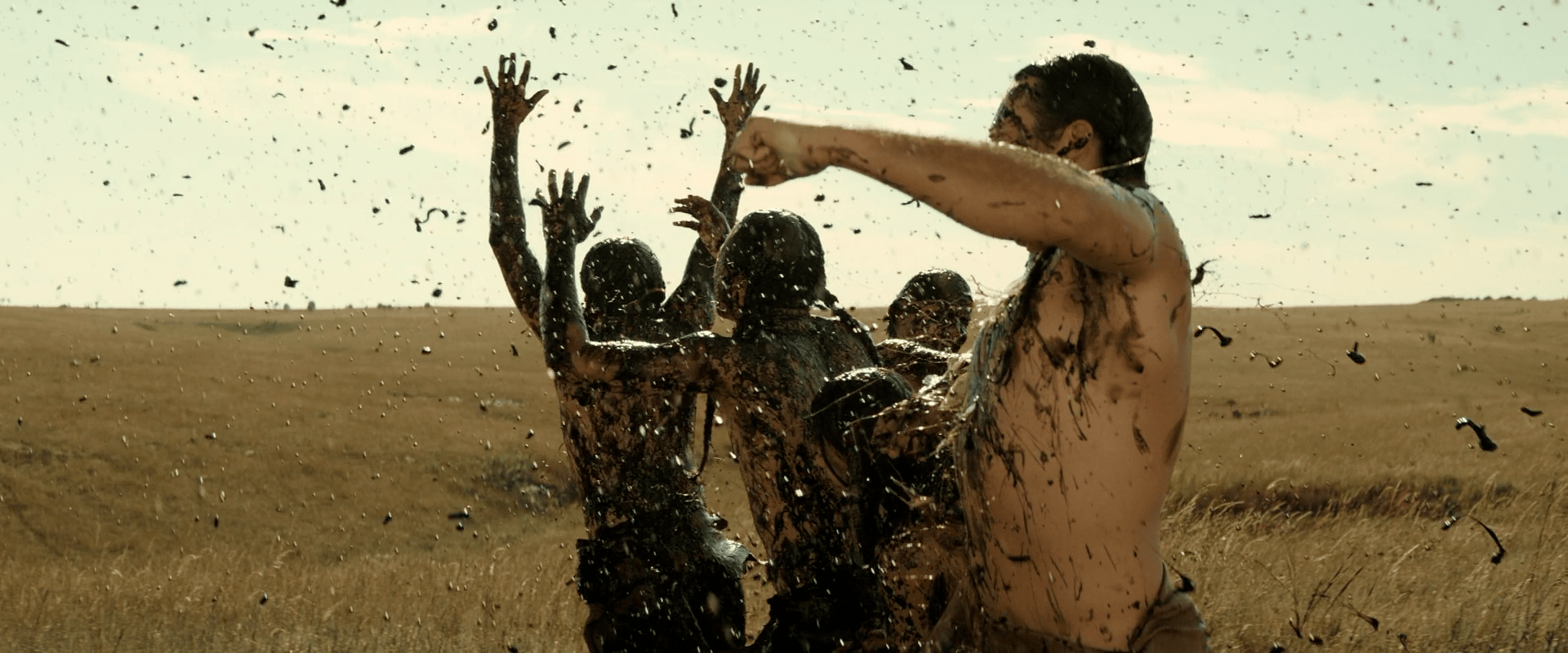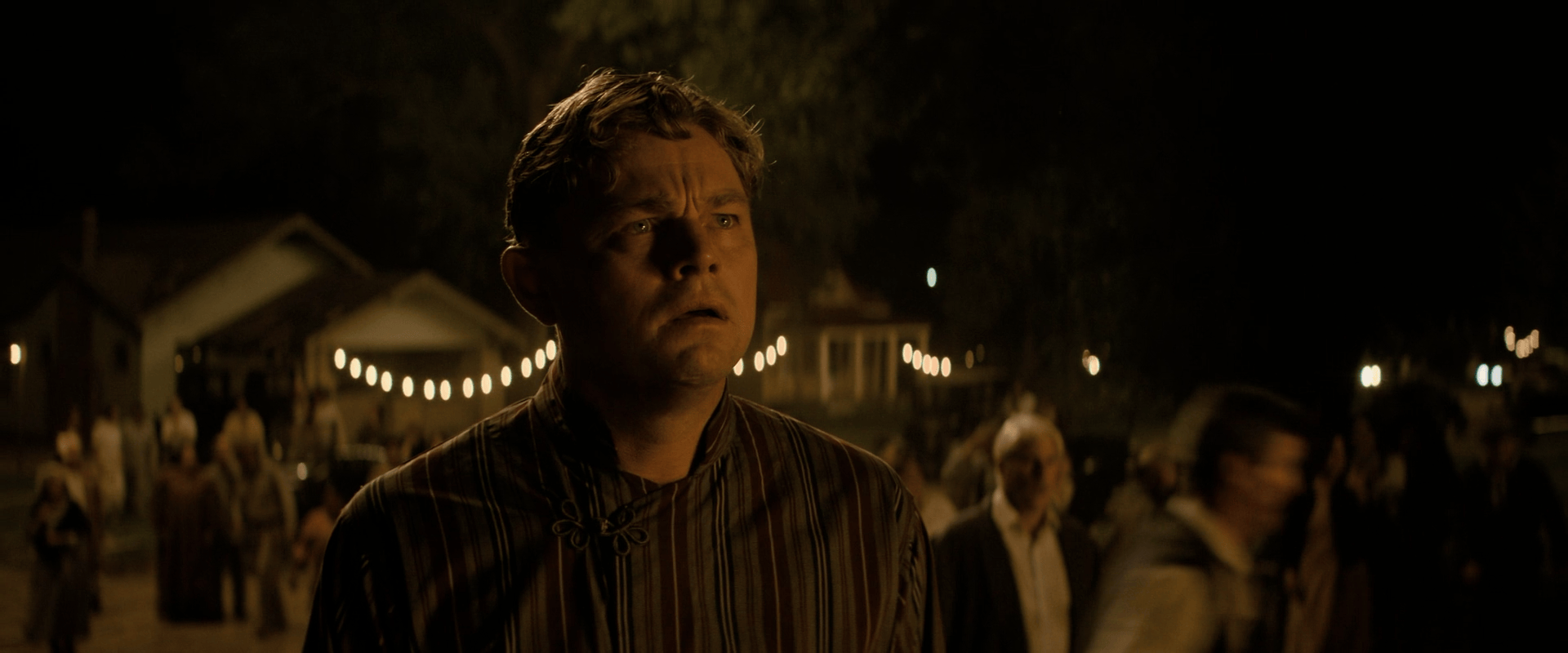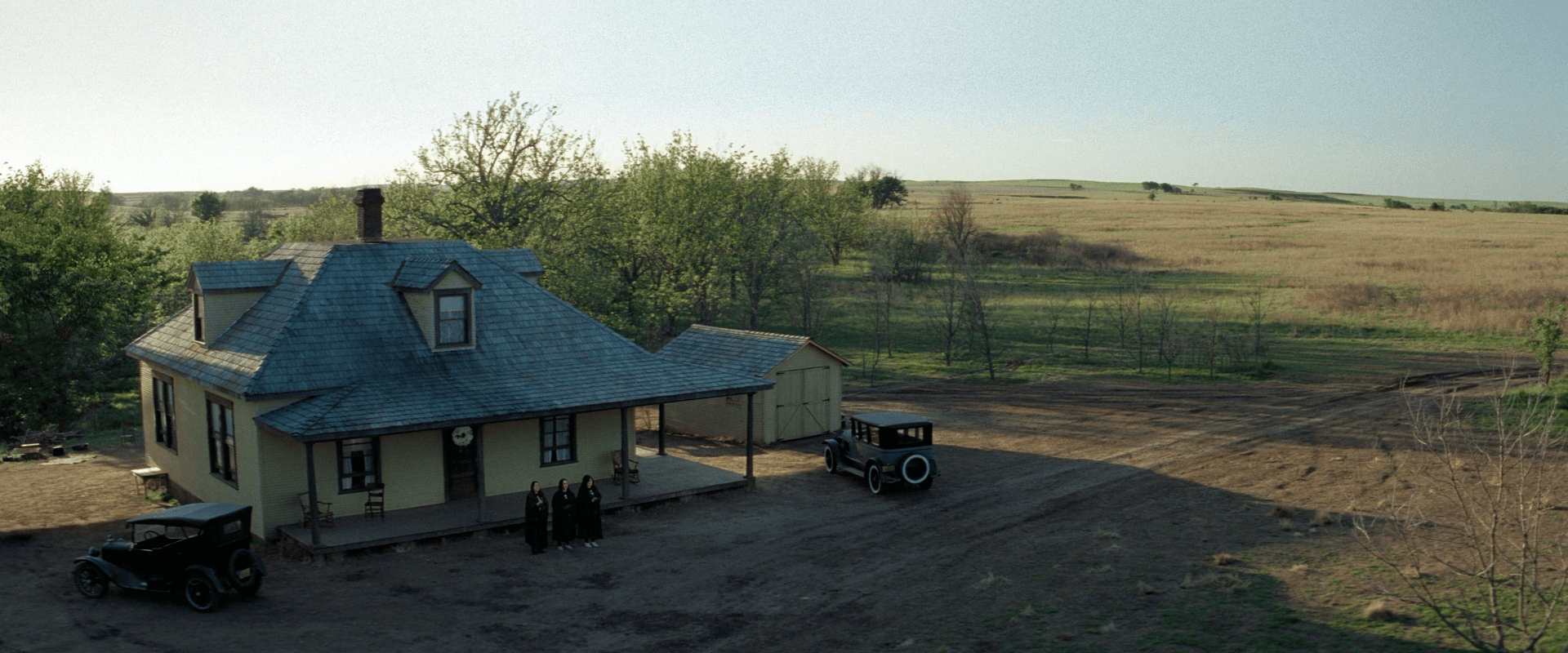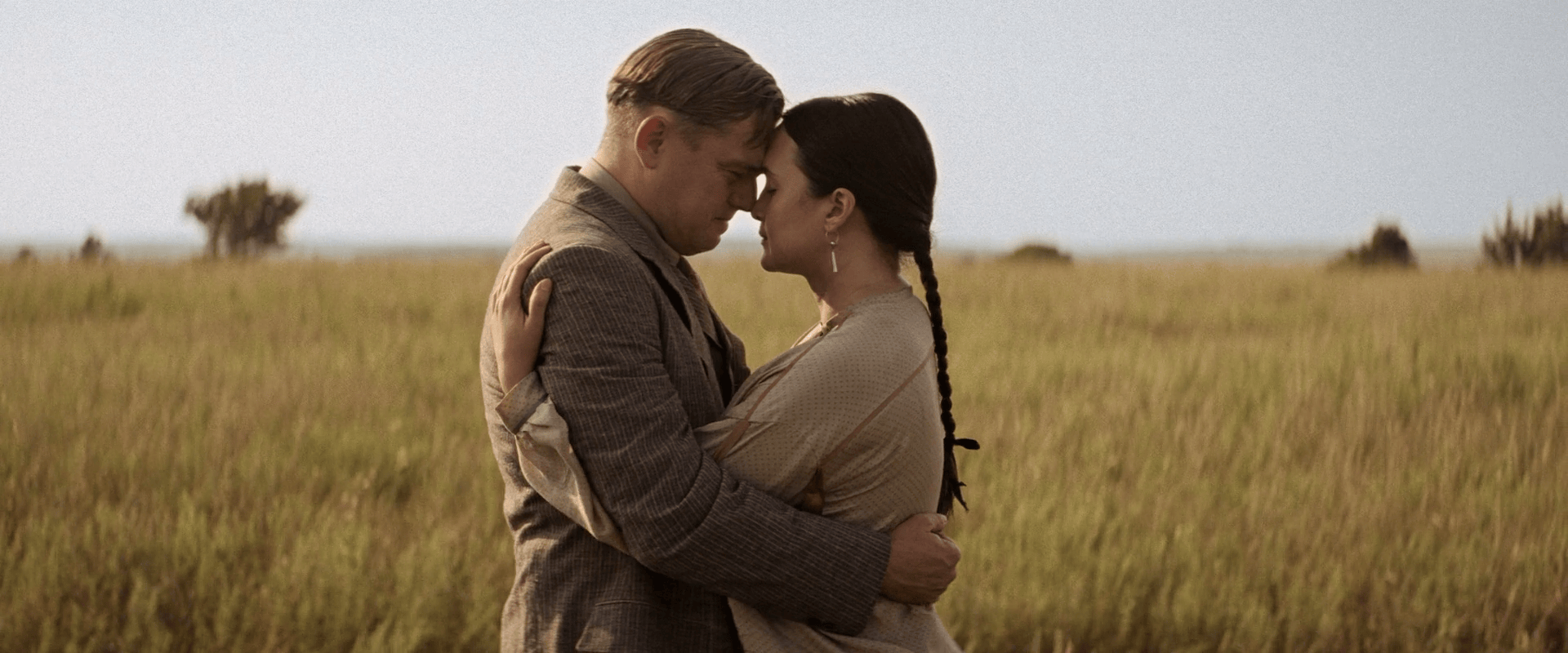Jake Sulpice
☆ Killers of the Flower Moon
Watched on December 4, 2023

You let her have her secrets. That way, you’ll have yours.
Martin Scorsese’s Killers of the Flower Moon is more than a historical drama; it’s a tapestry woven with light and shadow, silence and noise, textures and details. Each meticulously crafted element contributes to a cinematic experience that grips you without shoehorning any unnecessary fluff. The film transcends entertainment, with an impact extending far beyond the theater, sparking dialogues and challenging misaligned perspectives on historical narratives surrounding cultural representation.
Scorsese’s sixth film with Leonardo DiCaprio as a lead cast member shines a light on the Osage Murders, a dark chapter in American history primarily relegated to the footnotes or forgotten entirely. By bringing this story to a global audience, Scorsese confronts the dominant narrative that often overlooks the injustices Indigenous communities face. It opens doors for further dialogue and re-evaluation of our past, empowering the Osage people to reclaim their story and demand recognition.

The film’s casting of Native American actors in lead roles marks a significant shift in Hollywood’s portrayal of Indigenous characters. It breaks away from the stereotypical tropes and offers a nuanced and genuine depiction of the Osage people, their culture, and their struggles. It portrays them not as passive victims but as individuals with agency, resilience, and a rich cultural heritage. As stated by lead actress Lily Gladstone, there were significant changes to the script to produce the most realistic depiction of the Osage people’s endeavors. This shift paves the way for increased diversity and inclusivity in film, challenging existing power structures and creating opportunities for authentic storytelling. The film raises critical questions about exploitation, greed, and the systemic inequity faced by marginalized groups, prompting viewers to confront uncomfortable truths about our nation’s history and the legacy of colonialism.
You know, you got nice color skin. What color would you say that is?
My color.
The only way to convey these messages is by crafting a film so thorough in quality that it demands you acknowledge that it was once the reality, as if you are there in the picture yourself. Scorsese is the man for the job if any director can finish the task. His mastery of lighting is evident in every frame; harsh sunlight casts long shadows, reflecting the cruel existence of the Osage Nation’s plight, while candlelight flickers in the night to illuminate both tender moments and acts of unspeakable violence. The film is a study in contrasts, where moments of beauty are juxtaposed against the brutality of the heinous murders, painting a haunting visual portrait.

The camerawork is deliberate and evocative. Long, static shots capture the vastness of the Oklahoma landscape, highlighting the vulnerability of the Osage people who have no place to seek refuge. Intimate close-ups reveal the emotions etched on characters’ faces, drawing you into their shattered world. The camera often lingers on seemingly insignificant details, objects imbued with symbolic meaning and historical accuracy.
Scorsese’s use of sound is equally masterful. The heavy silence over certain scenes is deafening, amplifying the tension and petrifying fear. The score, a haunting mix of traditional Native American music and modern orchestral elements, adds an emotional depth to the film that weaves seamlessly with each visual. Dialogue is sparse for some characters, but each word carries massive weight, revealing the characters’ inner turmoil.
The meticulous attention to detail in the set design, costumes, and props transports the audience to 1920s Oklahoma. The luxurious interiors of the oil barons’ homes starkly contrast the simple dwellings of the Osage people. The costumes are not mere decorations; they demonstrate the characters’ social positions, cultural identities, and evolving perspectives. The film’s commitment to practical effects adds a layer of realism that reinforces its historical accuracy. From the meticulously recreated oil boom towns to the visceral portrayal of violence, Scorsese uses practical effects to transport you back in time and confront the brutality of the true events. The house bombing, in particular, is as impressive as it is visually striking.

I don’t know what you said, but it must’ve been Indian for “handsome devil.”
With a nearly 3.5-hour runtime, Killers of the Flower Moon is the opposite of a slog. The pacing and sequencing of each scene were skillfully calculated, leading to a story that didn’t get dull for a moment. All that being said, the film’s finale left slightly more to be desired, feeling almost like Scorsese was pressed for time when noticing how long the movie’s length was already. The ending was exceptional in presentation, but another ten or fifteen minutes could have been appended, and I wouldn’t complain a bit.
Details
- IMDB | Letterboxd
- Released in 2023
- Directed by Martin Scorsese